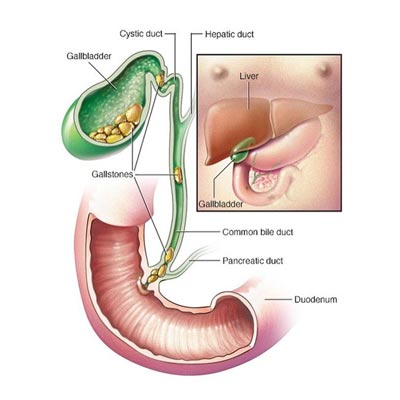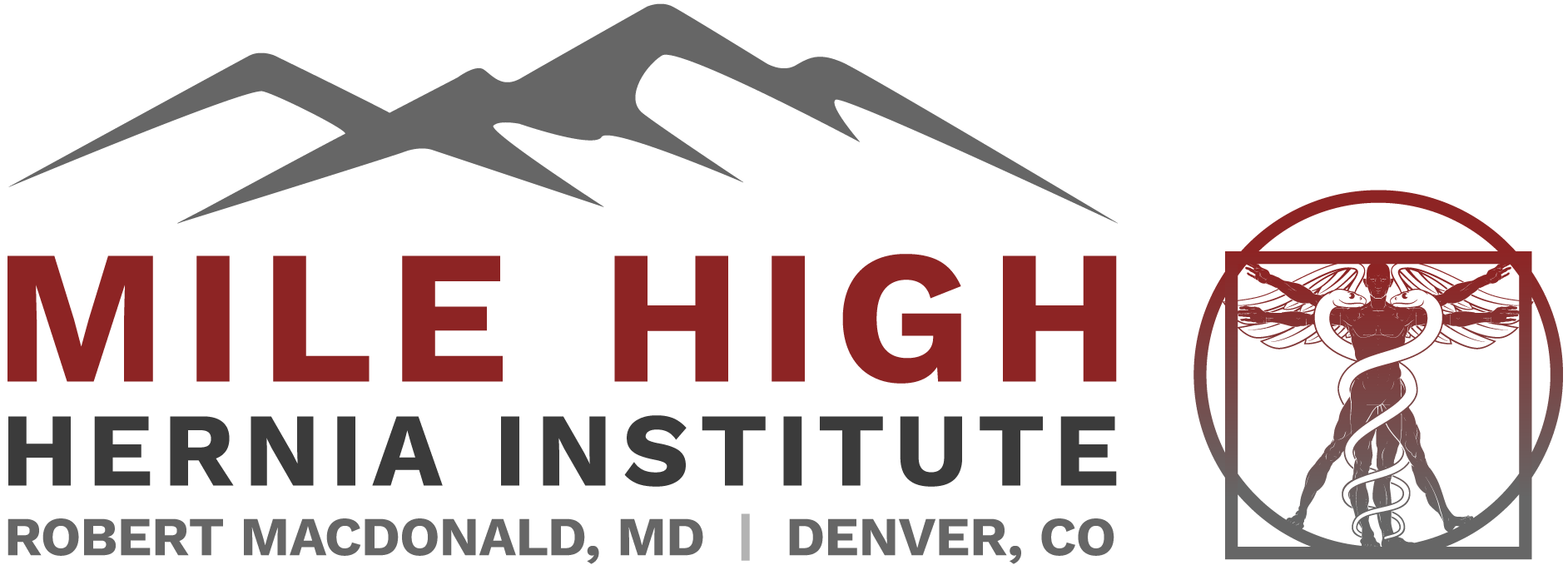Gallbladder Symptoms
Symptoms of Gallbladder Disease
Symptoms from gallstones result when a stone blocks the normal flow of bile. A stone can block the cystic duct, bile duct, or the pancreatic duct. Pain is the most common symptom, typically located in the mid or right upper part of the abdomen. It may radiate to the back, often between the shoulder blades. Nausea is also common. Symptoms may follow meals, typically fatty or spicy, though symptoms can occur anytime without provocation.

Cystic Duct Obstruction
This picture shows many locations where gallstones can cause troubles. The most common problem occurs when a gallstone blocks the cystic duct. Throughout every day, the gallbladder normally contracts and empties, especially following meals. When there is a blockage(stone), the result is abdominal pain and inflammation of the gallbladder. If the stone falls back into the gallbladder, the attack resolves. If it remains stuck, the pain is unrelenting. Fever and chills can occur, and thus more immediate treatment is required.
Pancreatic Duct Obstruction
As a stone passes, it may block the pancreas, causing pancreatitis, or inflammation of the pancreas. Symptoms such as abdominal pain are always present, and the diagnosis can be confirmed by a simple blood test. Though pancreatitis often resolves over the course of days, it can also be a severe and life-threatening illness. Again, urgent medical attention is needed. Gallbladder surgery is typically performed after the episode of pancreatitis has resolved.
Bile Duct Obstruction
When a stone passes into the bile duct, it blocks the flow of bile from the liver. Pain is typical, now accompanied by liver function abnormalities and occasionally jaundice(yellowing of the eyes and skin). The potential of a severe or life-threatening illness exists. Urgent attention is needed, though surgery is often not the first step.
Is Gallbladder Surgery Right for You?
Despite the described complications of gallstones, it is generally agreed that if a patient has stones in the gallbladder that have never caused symptoms, observation is recommended. Several studies have confirmed this approach. However, when a single attack occurs, it generally means more will follow, and removing the gallbladder is recommended.
